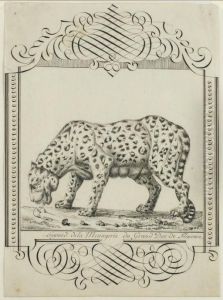Leon De Wailly Paintings
Leon De Wailly was a notable figure in 19th-century French art and literature, born in 1824 and passing away in 1873. Although not as widely recognized as some of his contemporaries, De Wailly made significant contributions to the French cultural landscape of his time. He was a versatile artist, intertwining his skills and interests across various domains including painting, writing, and scenography. His work, therefore, embodies the rich tradition of French artistic innovation, reflecting the broader trends of Romanticism and the nascent movements that would eventually lead into modernism.
De Wailly's artistic journey was marked by his dedication to both the visual and literary arts. He was deeply influenced by the Romantic movement, which was characterized by an emphasis on emotion and individualism as well as a reverence for the historic and natural landscapes. This influence is evident in his paintings, which often explored dramatic themes, vibrant expressions, and a deep appreciation of beauty in its myriad forms. Beyond painting, Leon De Wailly was also involved in the literary scene, contributing to the period's intellectual discourse through his writings. His literary works showcased a keen insight into the human condition, woven together with a narrative style that was both evocative and poignant.
Despite the richness of his contributions, De Wailly's work has not been as prominently celebrated or studied as that of some of his peers. This relative obscurity may be attributed to the immense overshadowing presence of other giants of the era, such as Victor Hugo and Eugène Delacroix, whose works have dominated the narrative of 19th-century French art and literature. Nevertheless, Leon De Wailly's oeuvre remains an important piece of the cultural mosaic of his time, offering a unique perspective on the artistic and intellectual currents that swept through France and Europe during his lifetime.
His death in 1873 marked the end of a career that, though it may not have garnered widespread acclaim, significantly contributed to the cultural and artistic dialogues of the period. Today, scholars and enthusiasts of 19th-century French art and literature continue to study De Wailly's work, recognizing its value in understanding the complexities and nuances of this pivotal era in European culture. His legacy, encapsulated in both his paintings and writings, continues to inspire appreciation for the depth and breadth of French Romanticism and its impact on subsequent generations of artists and writers.


